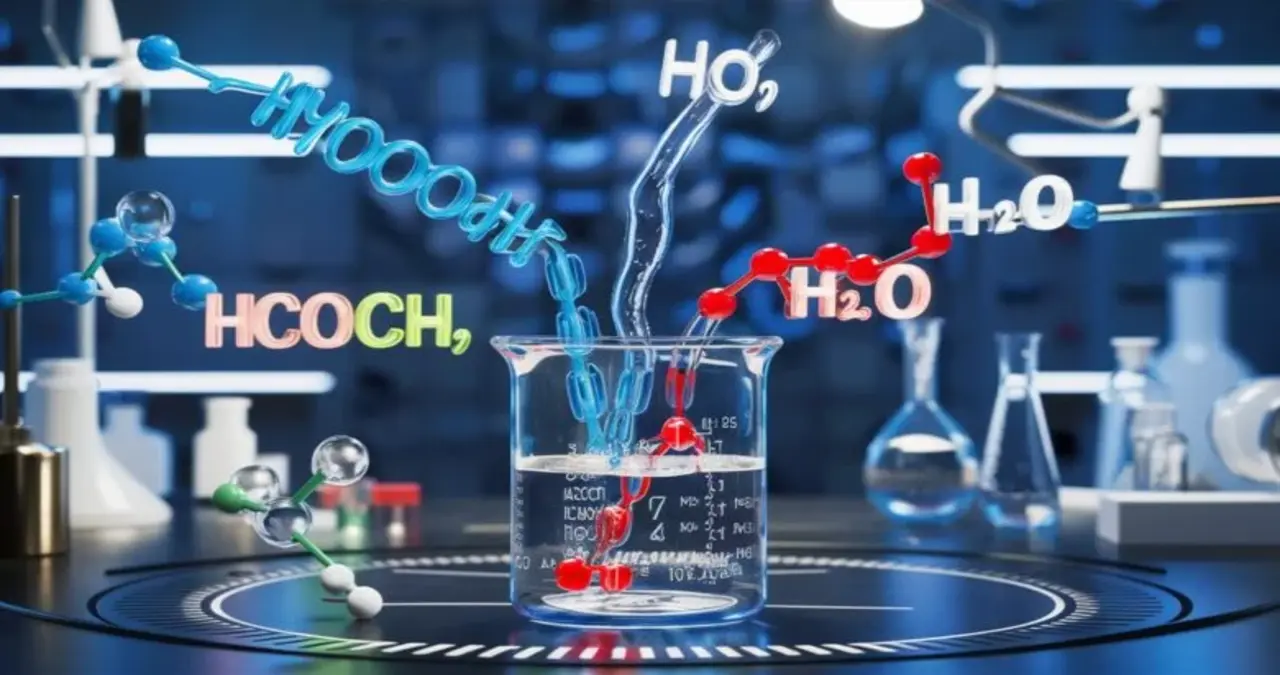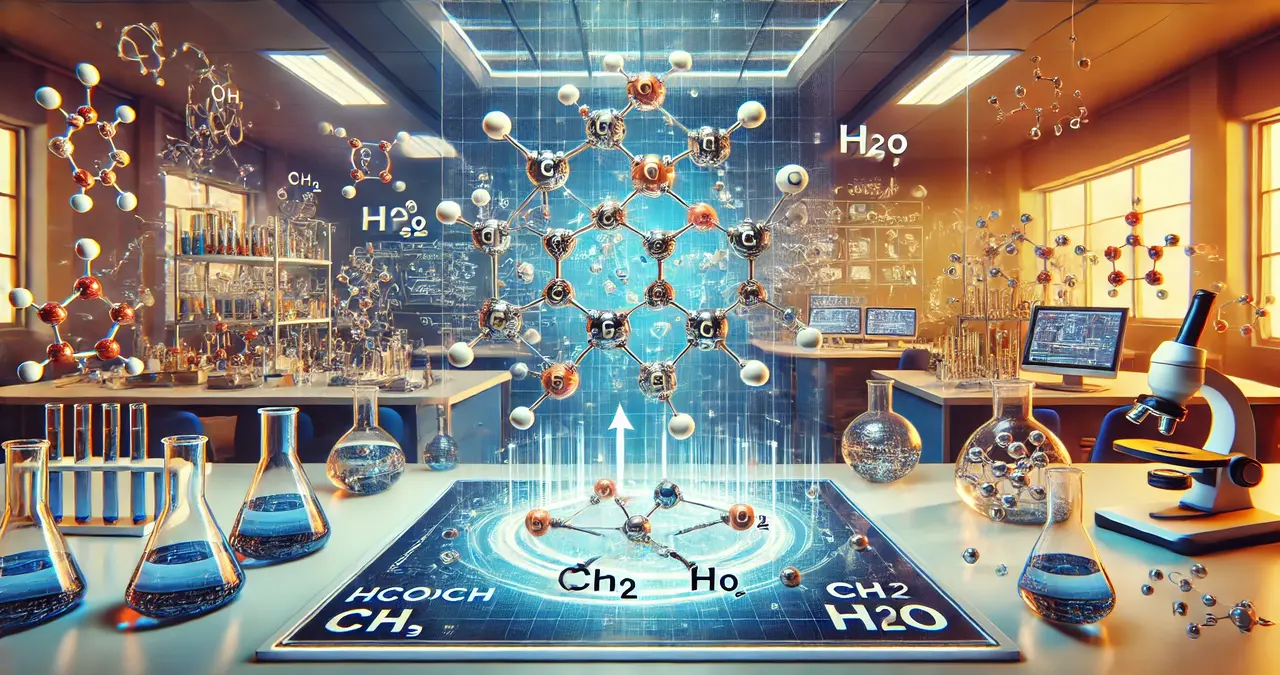Table of Contents
ToggleIn industrial chemistry, understanding molecular structures and their potential applications is crucial for optimizing processes and discovering new products. One such molecule that has garnered significant attention is HCOOCH CH2 H2O, also known as an ester with a hydrophilic group. This compound is of particular interest due to its role in various chemical reactions and synthesis processes fundamental to small-scale laboratory experiments and large-scale industrial applications.
In this article, we will explore the chemical structure of HCOOCH CH2 H2O, its relevance in industrial chemistry, its reactions, and its diverse applications in synthesis, material production, and pharmaceuticals. We will also examine this compound’s role in esterification, hydrolysis, and other significant chemical processes that are pivotal to modern chemical industries.
What is HCOOCH CH2 H2O?

HCOOCH CH2 H2O is an ester, a category of organic compounds formed through the reaction between an alcohol and a carboxylic acid. The general formula for an ester is RCOOR’, where R and R represent alkyl or aryl groups. In the case of HCOOCH CH2 H2O, the molecule consists of a formate ester group (HCOO), a methylene (CH2) group, and a hydroxyl group (H2O), making it a versatile compound in both organic synthesis and industrial chemistry.
The ester group (COO) in the molecule is critical for its reactivity and its interaction with other substances in chemical reactions. Hydroxyl groups (like the -OH in H2O) contribute to the compound’s ability to engage in hydrolysis reactions, forming the foundation for various industrial processes. Its composition suggests it has properties that allow it to dissolve in water and react efficiently with other organic and inorganic chemicals.
The Role of HCOOCH CH2 H2O in Industrial Synthesis
One key aspect of industrial chemistry is the synthesis of valuable compounds. HCOOCH CH2 H2O plays a vital role in the synthesis of chemicals such as pharmaceuticals, plastics, and speciality chemicals. Through esterification, hydrolysis, and transesterification, the compound helps to produce a variety of industrially significant products.
Esterification Reactions
Esterification is a chemical reaction that forms esters from carboxylic acids and alcohols. This process is central to producing various esters in flavours, fragrances, and polymers. In industrial applications, HCOOH (formic acid) esterification with CH3OH (methanol) can produce HCOOCH3, a formate ester used in many chemical processes. Similarly, HCOOCH CH2 H2O can serve as a precursor in esterification reactions to form other esters with varied functional groups.
These esters have applications in solvents, plasticizers, and additives used in polymers, paints, and coatings industries. HCOOCH CH2 H2O’s ability to act as a versatile intermediate in these reactions significantly enhances the efficiency and output of industrial synthesis processes.
Hydrolysis and Its Applications
The hydrolysis of HCOOCH CH2 H2O results in the breakdown of the ester group, which can be crucial for producing products in soap production, detergents, and other chemicals that require transforming ester bonds into carboxylic acid and alcohol. In industrial settings, this is often achieved under acidic or basic conditions, leading to formic acid and methanol generation. These products are widely used in the chemical industry for various applications, including producing solvents, plastics, and other industrial chemicals.
Hydrolysis also plays a pivotal role in water treatment and biodegradable materials, particularly in processes aimed at minimizing environmental impact. Esters like HCOOCH CH2 H2O are often involved in reactions that break down complex organic substances into more straightforward, biodegradable components, contributing to more sustainable industrial practices.
Transesterification and Biodiesel Production
Another critical industrial application of HCOOCH CH2 H2O is in transesterification reactions, where an ester reacts with an alcohol to form a new ester and a new alcohol. This process is the backbone of biodiesel production, where vegetable oils or animal fats react with methanol or ethanol to form biodiesel and glycerol. The transesterification process involving HCOOCH CH2 H2O can improve reaction efficiency, leading to higher yields and better-quality biodiesel. The importance of this reaction in renewable energy production cannot be overstated, as it plays a significant role in creating more environmentally friendly fuel alternatives.
Applications in Pharmaceutical Chemistry
HCOOCH CH2 H2O is interested in the pharmaceutical industry due to its potential applications in synthesizing various drug intermediates and active pharmaceutical ingredients (APIs). The compound can participate in esterification reactions to create pharmaceutical esters, often used to enhance drug absorption or modify the pharmacokinetics of certain medications.
For example, esters are frequently used to improve a drug’s lipid solubility, enhancing its ability to cross cell membranes and increasing bioavailability. HCOOCH CH2 H2O and its derivatives are integral to synthesizing these esters. Furthermore, the ability of this molecule to undergo hydrolysis or transesterification opens up possibilities for creating biodegradable drug delivery systems.
Industrial Uses in Material Synthesis
Another area where HCOOCH CH2 H2O plays a role is the synthesis of materials such as polymers, plastics, and synthetic rubbers. Polymeric materials, which have widespread uses in the construction and electronics industries, often rely on esterification reactions to build long-chain molecules. Esters like HCOOCH CH2 H2O are frequently used as intermediates in synthesizing polyesters (such as PET), which are ubiquitous in the textile and packaging industries.
In plastics production, HCOOCH CH2 H2O contributes to the creation of specialized polymers with specific physical properties, such as high thermal resistance or biodegradability. Polymerization of these esters allows manufacturers to tailor the characteristics of the resulting plastic products, which is essential for creating environmentally friendly alternatives to traditional plastics.
Environmental and Sustainability Considerations
As industries shift towards more sustainable practices, compounds like HCOOCH CH2 H2O are becoming increasingly important. This compound’s role in biodegradable polymer production, renewable energy generation, and eco-friendly chemical reactions makes it an ideal candidate for sustainable industrial chemistry. Its ability to participate in reactions that lead to biodegradable products, clean fuels, and environmentally safe solvents is essential in reducing the environmental footprint of chemical manufacturing.
Additionally, using HCOOCH CH2 H2O in green chemistry reactions—where toxic chemicals are replaced with safer, more sustainable alternatives—highlights its versatility and value in modern industrial processes.
Conclusion
HCOOCH CH2 H2O plays a critical role in industrial chemistry, particularly in synthesis and reactions that produce valuable compounds used in pharmaceuticals, plastics, energy production, and more. Its involvement in esterification, hydrolysis, transesterification, and polymerization reactions underscores its significance in various industries. As the demand for sustainable and eco-friendly chemical processes continues to rise, the role of compounds like HCOOCH CH2 H2O in green chemistry and renewable energy solutions will likely become even more crucial. The versatility of this molecule makes it a key player in modern industrial chemistry, helping drive innovation and sustainability across various sectors.
FAQS
- What is HCOOCH CH2 H2O, and how is it structured?
HCOOCH CH2 H2O is an ester compound consisting of a formate ester group (HCOO), a methylene group (CH2), and a hydroxyl group (H2O). Its structure makes it useful in various chemical reactions such as esterification, hydrolysis, and transesterification, which are essential in industrial chemistry.
- What role does HCOOCH CH2 H2O play in industrial synthesis?
HCOOCH CH2 H2O is involved in esterification reactions, where it helps form a range of esters used in producing solvents, plasticizers, fragrances, and polymers. Additionally, it participates in hydrolysis and transesterification reactions, which are critical in producing biodiesel and various industrial chemicals.
- How does HCOOCH CH2 H2O contribute to the production of biodiesel?
HCOOCH CH2 H2O is used in transesterification reactions, a crucial process in biodiesel production. When vegetable oils or animal fats react with methanol or ethanol, biodiesel and glycerol result, the compound helps improve the reaction efficiency, leading to higher-quality biodiesel production.
- What is the significance of hydrolysis in the context of HCOOCH CH2 H2O?
Hydrolysis of HCOOCH CH2 H2O breaks the ester bond, producing formic acid and methanol, which are valuable products in industries like soap production, water treatment, and biodegradable materials. This process is essential for creating sustainable chemicals and reducing environmental impact.
- What are the industrial applications of HCOOCH CH2 H2O in pharmaceuticals?
HCOOCH CH2 H2O synthesizes drug intermediates and active pharmaceutical ingredients (APIs) in the pharmaceutical industry. It creates pharmaceutical esters that can improve drug absorption and modify the pharmacokinetics of certain drugs, enhancing their therapeutic effectiveness.















